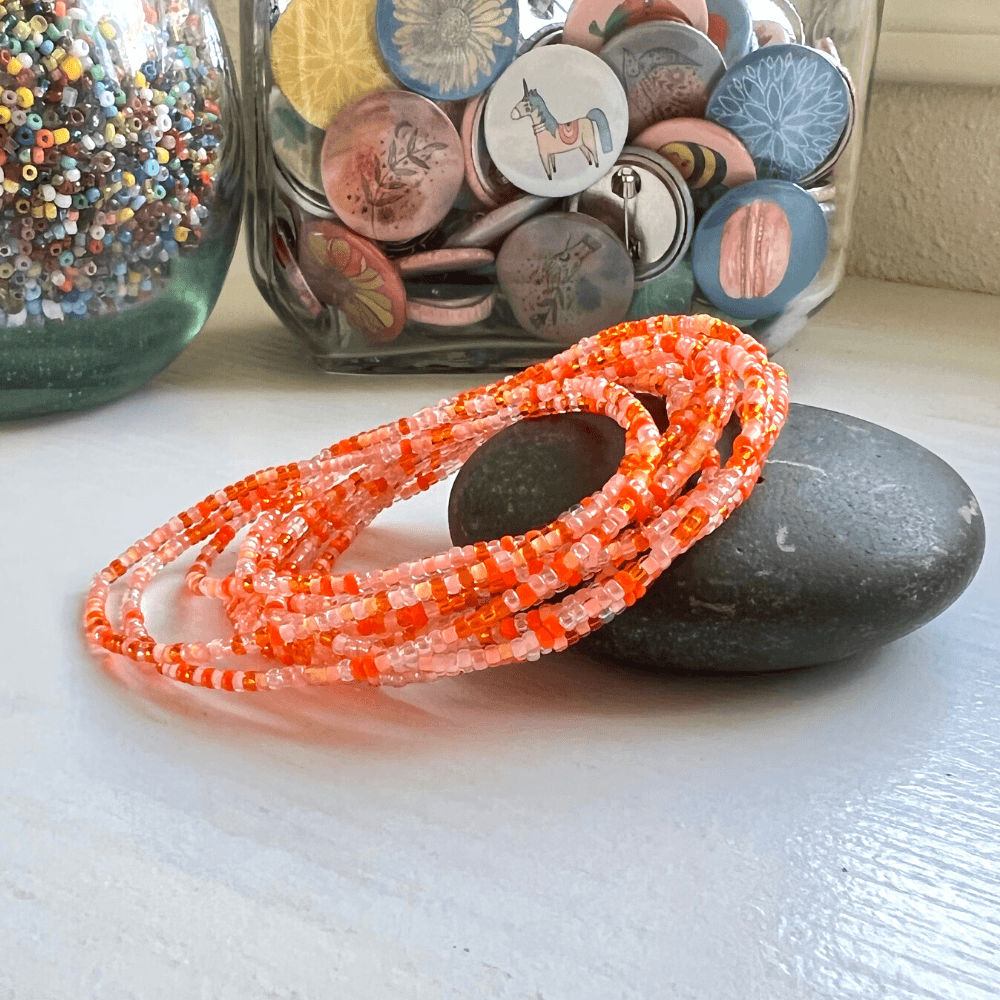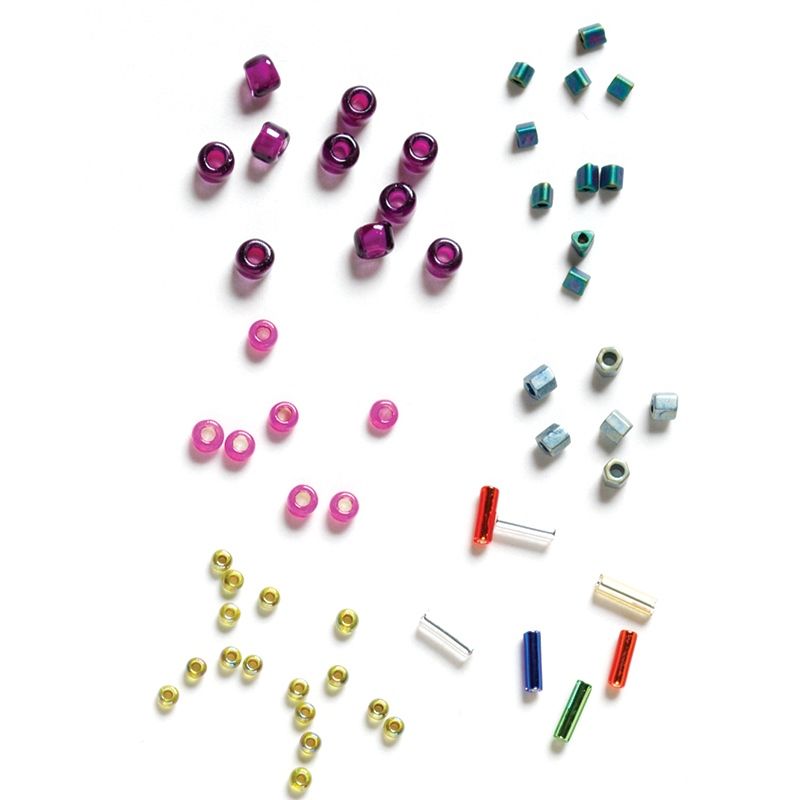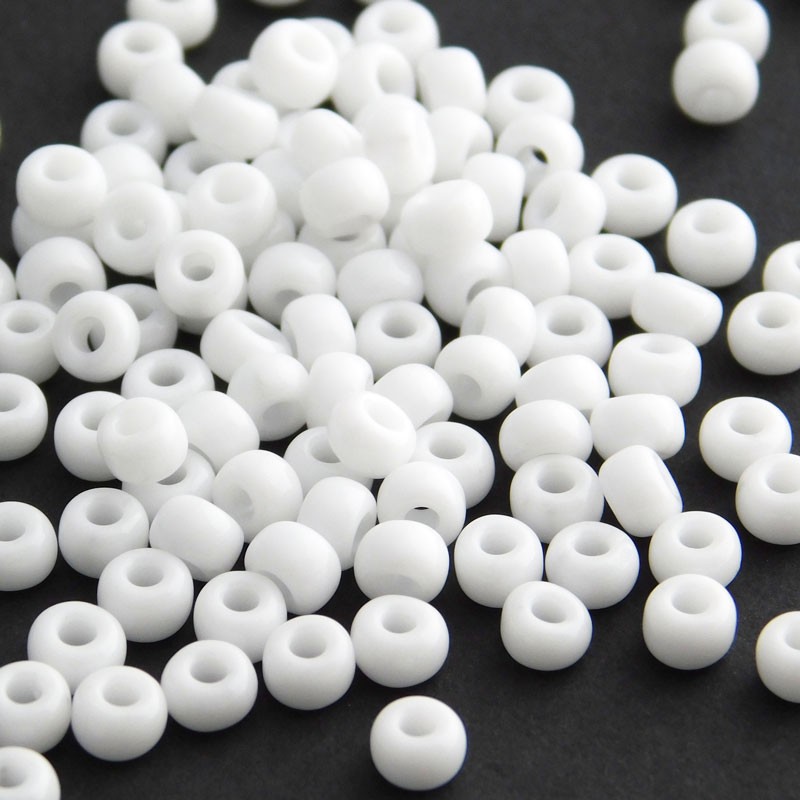Introduction to Seed Beading
Seed beading is a timeless craft enjoyed by many around the globe. This intricate art form involves threading tiny glass beads, often referred to as seed beads, to create detailed jewelry and ornamental designs. Originating from ancient civilizations, seed beading has a rich cultural history. From Native American beadwork to African jewelry, different styles reflect regional stories and traditions. The artistry and patience required make seed beading both a challenging and rewarding hobby.
Moreover, seed beading offers a vast array of possibilities to both beginners and experts. Diverse techniques and patterns ensure that no two pieces are the same. Additionally, the accessibility of materials and the relatively low cost make this craft an excellent choice for those wishing to hone their artistic skills. Beginners may start with simple patterns, gradually advancing to more complex designs. Furthermore, the sense of achievement derived from crafting a beautiful piece is unparalleled.
Materials and Tools for Seed Beading
Types of Seed Beads
To begin your journey in seed beading, it’s crucial to understand the different types of seed beads available. Seed beads come in various sizes, shapes, and materials. Glass seed beads are the most common, known for their glistening sheen and uniformity. They come in an array of colors, offering endless creative possibilities. Japanese seed beads, particularly brands like Miyuki and Toho, are renowned for their precision and consistency. These beads offer a uniform shape, making them a favorite among experienced beaders.
On the other hand, Czech seed beads, though less uniform, provide a distinctive charm with their slightly irregular shapes. Japanese delica beads, cylindrical in shape, are ideal for intricate patterns and bead weaving due to their uniformity. Lastly, vintage seed beads offer a nostalgic element, often sought after for their unique and often rare colors. Their slight imperfections can add character and historical value to any piece.
Essential Tools for Seed Beading
Equipping yourself with the right tools is vital for successful seed beading. A beading needle is indispensable, as its fine eye can easily pass through tiny seed beads. Beading needles come in various sizes, with size 10 and 12 being the most common for seed beading. The choice of thread is equally important. While traditional beaders might prefer silk thread, modern practitioners often opt for nylon or polyester threads due to their strength and flexibility. FireLine and Nymo are popular choices, known for their durability and range of colors.
A bead mat provides a soft surface to work on, preventing beads from scattering. Additionally, bead organizers help in keeping different colors and sizes sorted, ensuring easy access during intricate projects. Sharp scissors or thread snippers are essential for neat finishes. Finally, magnifying glasses or beading lamps can be beneficial for those working on detailed designs, ensuring precision and reducing strain on the eyes. These tools collectively enhance the beading experience, making the process smoother and more enjoyable.

Techniques and Patterns in Seed Beading
Basic Beading Stitches
Mastering basic beading stitches is fundamental to advancing in seed beading. The peyote stitch is one of the most popular and versatile stitches. It involves picking up one bead at a time, creating a staggered effect. This stitch is ideal for creating flat, tubular, and circular patterns. Another essential stitch is the brick stitch, which mimics the appearance of a brick wall. This technique is excellent for crafting intricate shapes and fringes. Both the peyote and brick stitches form the foundation for many advanced beading patterns.
The herringbone stitch, also known as Ndebele stitch, creates a distinctive zigzag pattern. This stitch is perfect for crafting tubular designs such as bracelets and necklaces. Ladder stitch is another fundamental technique, often used as a foundation for other stitches. It involves stringing beads in a straight line, stacking them in pairs. Understanding these basic stitches allows beaders to explore more complex patterns. Transitioning from one stitch to another can open up a world of creative possibilities.
Advanced Beading Techniques
Once basic stitches are mastered, exploring advanced beading techniques can significantly expand your creative repertoire. Bead weaving, for instance, involves interlacing beads using multiple thread passages to form intricate patterns. This technique can produce elaborate designs, mimicking the look of woven textiles. Another advanced method is bead embroidery, where beads are sewn onto fabric to create detailed illustrations or embellishments. This technique is often used in haute couture fashion and traditional costumes.
Loom beading is another advanced technique, involving a beading loom to create uniform, grid-like patterns. This method is excellent for creating wide bracelets, belts, or decorative art pieces. Right-angle weave, both single and double, offers a flexible and sturdy structure perfect for forming 3D shapes. Combining different techniques can lead to innovative designs and personalized creations. Advanced techniques require patience and practice but greatly enhance the artistic scope of seed beading.

Creating Your First Seed Beading Project
Choosing a Simple Project
When embarking on your first seed beading project, starting with a simple design is advisable. A beaded bracelet is an excellent beginner-friendly project. It allows you to practice basic stitches like the ladder stitch or single-row peyote stitch. Choose two or three coordinating colors to keep the design manageable and visually appealing. A simple necklace or earrings are also suitable first projects. They provide an opportunity to practice bead stringing and securing clasps.
Moreover, starting with smaller projects prevents overwhelm and keeps motivation high. Simple projects build confidence, ensuring a solid foundation before attempting more complex designs. Ensure you have all necessary materials and tools prepared. This preparation reduces interruptions and keeps the creative flow intact. Enjoy the process of selecting bead colors and arranging them in appealing patterns. Remember, the beauty of seed beading lies in its detail and the personal touch you bring to each creation.
Step-by-Step Instructions
Follow a step-by-step approach to ensure a successful beading project. Begin by threading your needle and securing one end of the thread with a knot or bead stopper. Pick up the first few beads according to your chosen pattern. For a basic ladder stitch bracelet, string two beads and pass the needle back through the first bead. This step creates a loop, securing the beads together. Continue this process, adding beads and looping the thread through the previous beads until the desired length is achieved.
After completing the bead stringing, secure the end by passing the thread through multiple beads several times. This step ensures the beadwork stays intact. Attach a clasp using jump rings or beading wire, ensuring it is tightly secured. Trim any excess thread, and your first beaded creation is complete. Celebrate this accomplishment, no matter how simple. This first project sets the stage for more intricate beading endeavors. Remember, each piece you create is a testament to your growing skill and artistic journey.

Benefits and Joy of Seed Beading
Therapeutic Benefits
Seed beading offers numerous therapeutic benefits, making it much more than a mere craft. The repetitive nature of threading beads provides a calming effect, similar to meditation. This repetitive motion can help reduce stress and anxiety, promoting a sense of inner peace. Additionally, focusing on detailed work improves concentration and mindfulness. The act of creating something beautiful can uplift the spirit, fostering a sense of accomplishment and joy.
Moreover, seed beading encourages creativity and self-expression. Each design reflects the creator’s personality and vision, providing a unique outlet for artistic expression. This creative process can be particularly beneficial for those recovering from trauma or dealing with emotional challenges. The tactile engagement and visual stimulation involved in beading enhance cognitive functions and fine motor skills. Many find beading to be a soothing escape from the demands of daily life, offering a quiet space for personal reflection and growth.
Social and Community Aspects
Seed beading also fosters social connections and community bonding. Many beaders join clubs or online forums to share tips, patterns, and experiences. These communities offer a supportive environment where members learn from one another and build friendships. Participating in group projects or beading workshops enhances these social interactions. Collaborating on a communal beadwork piece or sharing resources fosters a sense of belonging and collective purpose.
Local and global beading competitions and exhibitions provide platforms for showcasing talent and creativity. These events celebrate the art of beading, inspiring new ideas and techniques. Furthermore, handmade beadwork pieces make perfect gifts, creating opportunities for personal connections and heartfelt exchanges. By sharing your creations with others, you spread joy and inspire potential beaders. The communal aspect of seed beading enriches the craft, turning individual hobbies into shared cultural and social experiences.
Conclusion
Seed beading is a captivating and rewarding craft that offers endless creative possibilities. Understanding the materials and mastering basic to advanced techniques are key to honing your beading skills. Embarking on a step-by-step project builds confidence and lays the foundation for more intricate designs. The therapeutic benefits and social connections fostered through beading make it a wholesome and enriching hobby. Whether you are creating a simple bracelet or an elaborate tapestry, each bead sewn is a journey of artistic expression and personal fulfillment. Stay patient, enjoy the process, and let your creativity shine through the art of seed beading.
